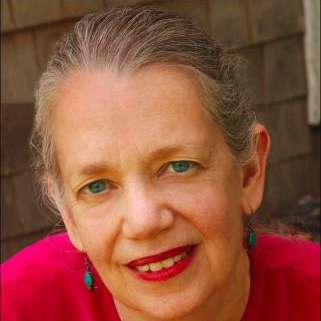In the far upstage reaches of the Yerba Buena Center for the Arts Theater, five singers join an ensemble of five musicians. The singers are women, three sopranos and a mezzo, led by a velvety toned contralto, Karen Clark. The instrumentalists combine piano and percussion with low reeds and strings, surprisingly two cellos and a violin. Reeds and cellos resonate with the deep round timbre of the contralto. There is something primordial in these darker low tones, something that suggests the substrata of our lives – the machinations of destiny, if you will.
Conceptually, this is where the latest dance performance of Garrett + Moulton Productions is situated. Speak, Angels, which premiered this past Thursday in San Francisco, is described by Janice Garrett as being about the “sense of spiritual presences or forces of nature” that we carry with us throughout our lives, and that only occasionally, but significantly, make themselves clear. She explains further: “It’s like the voice that tells you turn right at the next corner, and when you do you run into someone you haven’t seen in 20 years.” A someone who makes a crucial difference in your life.
And how does one realize such an intangible and numinous experience on stage, within the vocabulary of modern dance?
In the most subtle way, the two choreographers do this by emphasizing the kinetic, by using live music as the primary supporting element for the dance. There are no sets and only the most minimal of lighting (by Allen Willner), no noticeably colored spots, no washes of deep color decorating the upstage wall, no kinesis taken over by video or projection. There are only the musicians and the dancers.
The music itself has an abstract quality. Assembled by London–based composer Jonathan Russell, the music combines a procession of contemporary music by Marc Mellits, whose minimalist music has a driving, insistent quality, lightly graceful excerpts from Elena Kats-Chernin’s ballet “Wild Swans” and four excerpts from Mahler’s Ruckert lieder, all strung together with Russell’s own virtuosic network of compositions. The Mahler, with its exquisitely bittersweet tonalities gorgeously sung by Clark, were the highlights in this well-crafted mélange of music, providing background to two superb dance solos by Vivian Aragon and Carolina Czechowska.
The choreography itself is structured as a series of short pieces with two divisions of dancers: six soloists and a “movement chorus” of 18 dancers.
According to choreographer Charles Moulton, the movement chorus represents those forces of destiny that intrude upon our willful actions, changing and redirecting our lives.
Dressed in gauzy and clinging ultramarine costumes (by Julienne Weston), the chorus of 18 dancers clustered in groups and moved with synchronous gestures, emphasizing most often their arms and upper body. Because of the closeness of their placement, variations in movement were more noticeable. They didn’t have the clean precision of, say, the Bolshoi's corps de ballet, but this served them well. Their actions seemed organic and naturalistic, as if they were the tall grasses in a field moved variously by the winds passing through them.
This identification with sources of natural energy was heightened by several sections in which the movement chorus performed their own “music” a cappella. They moved and audibly breathed creating a symphony of sighs, huffs, inhalations and exhalations to accompany repeating patterns of gestures. In other sections the chorus acted directly with the soloists: blowing on them as if the blue-clad chorus members were personifications of the wind and the soloists leaves reeling and scurrying in response.
In an especially charming section of Speak, Angels, petite and lyrical Vivian Aragon in a shimmery pink dress and her partner Nol Simonse, in trousers and magenta shirt, were carried aloft by members of the movement chorus. The soloists bobbed along across the stage like paper boats on a stream, meeting and kissing briefly before being whirled away by separate currents.
The six soloists were partnered in sequences that exemplified human love. Aragon and Simonse danced tender duets in which the lovers folded into each other gently and adoringly. Carolina Czechowska, who is a powerful dancer, partnered with the fluid Michael Galloway in more ambivalent interactions, in which Czechowska slowly retreated into herself as Galloway was pulled by members of the movement chorus into the shadows of the stage. Dynamic Ryan Wang and lovely Alison Adnet were the more playful partners.
Garrett and Moulton’s choreographic style seems evenly influenced by both modern and balletic dance. Their style is more lyrical than earthy, more contained than brusque, more narrative despite its abstraction. And, ultimately, more pleasing because of those preferences. It will be interesting to note how this collaboration, now in its eighth year, progresses.


